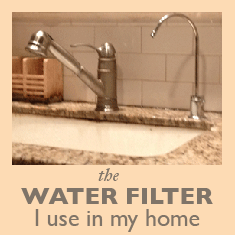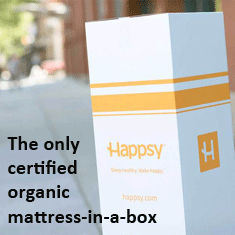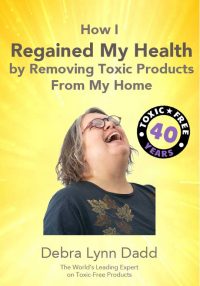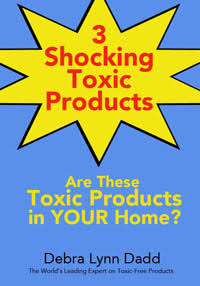
Water | Swimming Pools
Rosacea acne
Question from Deborah Barnett
Debra, My teen age son just found out he had a acne skin problem called rosacea. I kind of quessed he had it. Do you or any one have any experience with this? Doctor told me no cure and i do not want any harsh chemicals on his body. Thanks deborah from tennessee.
Debra’s Answer
I don’t have personal experience with this.
Readers?
Armstrong Solarian Removal (contains asbestos)
Question from Anne
We are planning to remove Armstrong Solarian that was installed in 1980 in our kitchen and dining room. It has been tested and contains asbestos. We purchased it from a store that is no longer in business and supposedly in 1980 asbestos in linoleum was already banned but it was still sold to us.
Not only is the pattern and color “dated,” we noticed in front of the sliding glass door that it was discolored, dark and rugs stuck to it. I didn’t catch on at first but then wondered why the rest of the floor was smoothe and not discolored. I looked at it with a magnifying glass and found that it had been melted by the sun through the glass door only on one side. Then we noticed the dining table legs were stuck to the floor and when we moved them, the top layer of floor covering was removed.
We want to remove this flooring completedly and have researched and found out that we can remove it ourselves but cannot hire anyone to remove it unless they are certified asbestos removal experts. Has anyone had experience with removal of this type of flooring and what was your experience? I am concerned about air monitoring for particulate in the air. I’ve heard if the subfloor is removed with the linoleum (with a skill saw, using water to wet it and keep particulate down), that is the best way instead of pealing it up.
We don’t want to encapsulate it because it will raise the floor level from one room to another and there may be a tripping/falling hazard. We are in our 60s and want to be safe. We are planning to replace the floor with hardwood.
Help! What was your experience and do you have any tips or advice before we start this process.
We were also told by a contractor friend that even though EPA seems to be strict about removal and disposal, he was told to drop it at the dump just like any other debris which was surprising.
Debra’s Answer
Stainsafe on Sofa
Question from Elizabeth
Debra,
I purchased my couch five years ago and had Stainsafe applied in the store before delivery. Now I obviously realize that decision was wrong but I don’t have the money for a new “organic” type of couch and all the companies want at least $1500 to reupholster my sofa and loveseat. Do you think after five years it’s gone? Or do you feel it can still be toxic to my toddler? I have checked and at the very least there were no flame retardants used on the foam. I acknowledge there are still fumes from the foam and plywood inside, but I’m mostly focused on the exterior fabric right now. I’m thinking about buying a few sofa covers (washed multiple times to get out the chemicals) and using those to minimize exposure from the Stainsafe.
Thanks!
Elizabeth
Feminine Hygiene Product Information
Question from Emily
I have a strange request and since you of all people are very knowledgeable on the subject, I thought I would go straight to the source.
I am looking for scientific and medical sources to use for a college english class project regarding the environmental and health effects of using disposable feminine hygiene products. I get to “solve” the issue by introducing alternatives and tell why they’re so great, but I need the hard facts on the issue. I’ve mentioned to my professor specifically the manufacturing (bleaching, etc.) and the landfill/ocean issues. He has told me I need at least 10 reliable sources to use. I know this isn’t the usual request, but if anyone can direct me to these sources, that would be wonderful. Thank you for helping this poor college student out.
Debra’s Answer
Well, Emily, I spend my time collecting the alternatives, so I would have to do the same leg work you would have to do to collect the studies.
But if anyone out there has some recommendations, let’s have them!
Is Kids Line brand crib bedding reputable?
Question from kb
We are expecting twins and have recently purchased Kids Line bedding, made in China. The company claims to be organic, which is why we purchased the set.
I’m wondering if anyone has used this bedding and can speak to this.
Along these same lines, does anyone have any thoughts on Gerber Organic products, such as their onsies and other clothing?
Finally, what do people think about organic cotton clothing made in China, in general?
Thanks!
Debra’s Answer
Readers?
Bubble Bath Recipe?
Question from Kristen
My little guys love to take bubble baths but I’m guessing that using most of the over the counter ones are about the same as steeping your kids in chemicals ;-). Do you have any good home made bubble bath recipes?
Thanks!
Kristen
Debra’s Answer
Readers?
Phosphates
Question from Leah
Hi Debra,
What can you tell me about phosphates and their use with laundry detergent? I have heard mixed things about their use. I know that they are illegal in some states, but for a person with hard water and clothes that do not get clean with any natural detergents or oxygen bleaches, might it be better to use them than chlorine bleach or other chemicals? I actually had a company on your list recommend that I look into using them. Thanks!
Debra’s Answer
The problem with phosphates is that wasterwater treatment plants remove only a small percentage of phosphorus, so the effluent that is released into streams, rivers, lakes and estuaries considerable amount of phosphorus. These bodies of water contain algae, the growth of which is kept in balance by a limited amount of phosphorus that occurs naturally in the water. Quite simply, more phosphorus results in more algae and the balance that keeps the aquatic ecosystem going is upset (read more at Historical Perspecitve Of The Phosphate Detergent Conflict).
Soap, on the other hand, has been used historically for centuries with no such problem.
If your water is too hard, it would be better to soften the water than to use a phosphate detergent.
I recommend that you call Winston at Go Beyond Organic and see if his water conditioner will work for you. It does not use salt of any kind. We have very hard water and use this conditioner, and our clothes get very clean using soap or soapnuts.
Bread Machine
Question from Nell Covington
Hi Debra,
I am thinking about buying a bread machine. It seems like all of the brands have a non-stick finish. Are these machines likely to get hot enough to make this a problem (I understand that the temp has to reach over 500 degrees to cause leaching, right??) What do you think?
Debra’s Answer
I don’t feel comfortable using non-stick finishes at any temperature.
I don’t know of a bread machine that doesn’t have a non-stick finish.
When I used to bake bread, I just baked it in the oven in a glass loaf pan. I don’t eat bread as part of my regular diet any more.
Food Steamers
Question from Steve Savitz
Are stainless steel food steamer inserts safe? I assume there wouldn’t be any nickel, aluminum, etc. Can anyone recommend a pot insert for steaming?
Debra’s Answer
Stainless steel is stainless steel, so steamers would have all the same issues as pans. Except short cooking time and you aren’t scratching them with metal utensils.
I have a bamboo steamer and I love it! Much more organic and less industrial.
Potential hazards of using 150 year old oak reclaimed wood floor
Question from TJW
The interior design is specifying us to use reclaimed 150 year old french wood floors in our home.
Our concern is that one of the wood floor installation subcontractors informed us that the wood floor appears to have been chemically dipped in some kind of chemical/stain mixture to make it look weathered and grey.
The supplier states since it is reclaimed material and they did not put the finish on it, they are unable to inform us of the chemicals/stains used.
Unfortunately, we have already purchased the material and the supplier will not take it back. Our concern is it the wood floor is off gasing any hazardous chemicals, if the wood floor dipping process contained any hazardous chemicals, and what are any hazards if we need to sand down the wood floor in the future and what chemicals may now be airborne.
Do you know of any agencies that can/will test our wood floors for any hazardous chemicals?
Thanks.
Debra’s Answer
My husband and I use a lot of reclaimed materials in our remodels and always examine them carefully for any treatments or finishes before we purchase them. Reclaiming wood is great for the environment and often results in better quality material than you can buy today, but you need to watch out for unknown treatments and finishes.
A clue to a problem would be if it has an odor.
I don’t know who to refer you to for testing. Readers?






